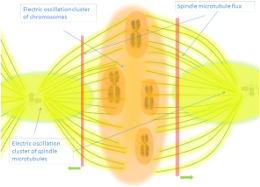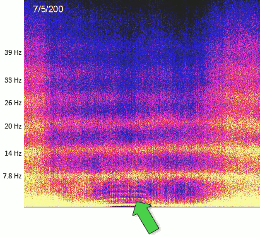

Phone Base Station MW Hazards
To live in front of a mobile phone mast is especially harmful to health
Mobile phone base stations emit continuous radiofrequency electromagnetic fields (RF-EMFs) that raise concerns about potential health and ecological impacts. This section consolidates experimental and observational findings, highlighting oxidative stress, genetic damage, reproductive effects, cognitive impacts, and biodiversity losses. ...
Evidence suggests that chronic exposure, especially at short distances, may pose significant risks to human health and ecosystems, underscoring the need for stricter exposure guidelines and mitigation strategies.
The proliferation of mobile phone base stations has significantly increased human and environmental exposure to RF-EMFs. While these fields are generally non-ionizing, their potential non-thermal effects on biological systems remain a topic of concern. This section synthesizes findings on the diverse impacts of base station radiation, addressing both human health and ecological outcomes.
Biological Mechanisms and Health Impacts:
Oxidative Stress:
Base station radiation is strongly associated with increased oxidative damage. Studies report elevated malondialdehyde (MDA) levels and reduced antioxidant capacity (e.g., glutathione peroxidase, superoxide dismutase) in individuals residing near base stations (Mahmood et al., 2022).
Oxidative stress contributes to DNA damage, cellular apoptosis, and inflammation, establishing it as a primary pathway for RF-EMF-induced harm (Zothansiama et al., 2017).
Genotoxic Effects:
Increased micronuclei frequency and chromosomal aberrations have been observed in lymphocytes of residents living close to base stations (Gulati et al., 2017).
Proteomic studies reveal altered expression of apoptosis-related proteins (e.g., Bcl-2 and neurofilament proteins) in brain tissue exposed to base station radiation (Tekyeh et al., 2019).
Reproductive Health:
Proximity to base stations correlates with reduced sperm motility, increased DNA fragmentation, and testicular tissue damage in exposed individuals and animal models (Singh & Pawar, 2019).
Hormonal disruptions, including decreased levels of thyroid-stimulating hormone (TSH), have been documented in children living near base stations (Elwasife et al., 2018).
Neurological and Cognitive Effects:
Chronic exposure to base station RF-EMFs has been linked to cognitive deficits, memory impairments, and anxiety-like behaviors. EEG studies indicate altered brainwave patterns in exposed populations (Bijlsma et al., 2024).
Elevated ROS levels in brain tissue further suggest potential neurodegenerative risks under long-term exposure (Zosangzuali et al., 2021).
Environmental and Ecological Impacts:
Flora and Fauna:
Significant reductions in pollinator diversity and abundance have been reported near base stations, impacting ecosystem services such as pollination (Lázaro et al., 2016).
Experimental studies show reduced germination rates and altered biochemical profiles in plants exposed to base station radiation, indicating stress responses (Amuda et al., 2018).
Wildlife and Biodiversity:
Behavioral changes, reduced reproductive success, and increased mortality have been documented in birds, bees, and other wildlife residing near base stations (Gajger et al., 2019; Waldmann-Selsam et al., 2016).
Chronic exposure is associated with habitat abandonment and biodiversity loss in urban and rural ecosystems.
Epidemiological Observations:
Cancer Risks:
Studies in Brazil reveal higher cancer mortality rates in areas with greater exposure to base station RF-EMFs, particularly for lung and breast cancers (Rodrigues et al., 2020).
Long-term exposure correlates with increased risk of leukemia, lymphoma, and other malignancies in both human and animal models.
Public Health Concerns:
Residents near base stations report symptoms consistent with electromagnetic hypersensitivity (EHS), including headaches, sleep disturbances, and chronic fatigue (Hardell & Koppel, 2022).
Children and adolescents show heightened vulnerability, with studies linking RF-EMF exposure to developmental delays and reduced academic performance (Premlal & Eldhose, 2019).
Discussion: The multifaceted effects of base station radiation underscore the urgency of revisiting exposure standards. Non-thermal mechanisms such as oxidative stress and genetic damage provide plausible explanations for the observed health and ecological impacts. Further interdisciplinary research is needed to delineate safe exposure thresholds and mitigate risks.
Conclusion: Mobile phone base station radiation poses significant challenges to human health and biodiversity. Strengthened regulatory frameworks, public education, and sustainable technology deployment are critical to minimizing these risks. Enhanced protective measures, including buffer zones around residential areas and wildlife habitats, should be prioritized.
Keywords: RF-EMFs, mobile phone base stations, oxidative stress, reproductive health, cognitive impacts, biodiversity loss, electromagnetic hypersensitivity, public health.
-Text generated by AI superficially, for more specific but also more surprising data check the tables below-Very related sections:
↑ text updated (AI generated): 05/01/2025
↓ tables updated (Human): 08/10/2025
Applied Fields - Hazards
 Phone Base Station MW Hazards
Phone Base Station MW Hazards
.
.

























